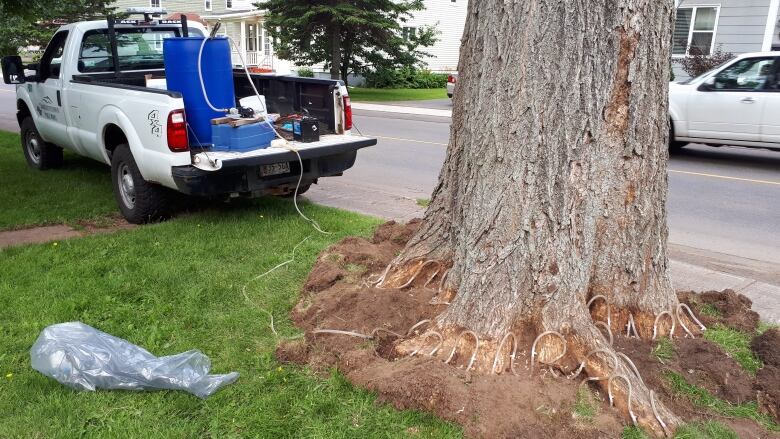Charlottetown using new preventative treatment for Dutch elm disease
The new treatment will only have to be applied once every three years

The City of Charlottetown is taking new measures to protect its elm trees after almost half of the city's elm tree population has been cut down since 2015.
About450 elm trees are scattered throughout the city, and according to Charlottetown'sparkland conservationist Beth Hoar, have been around for a very long time.
"Some of the biggest trees in the city are elm trees, so those are sort of heritage trees that are very valuable environmentally, but also cultural," said Hoar.
"Alot of people really love the trees in the city," she said.
Hoar said for the past twenty years,the city has had to manage Dutch elm disease,a fungal infection that's carried from tree to tree by elm barkbeetles.

The fungus spreads throughout the tree, clogging up nutrients and ultimately killing it.
Hoar saidin recent years, the disease has gotten worse, and they've had to cut down almost 50 per cent of the city's elm tree population.
"So far we've cut down 440 elms since 2015," she said.
New treatment
That's why the city is taking new measures to protect it's healthy elm trees and has started using a treatment called Arbotect 20-S.
"We're actually treating the tree to prevent it from getting the Dutch elm disease and it's supposed to have a very high success rate," said Hoar.
Hoar saidapplying the new treatment is labour intensive and is more expensive.On average it costs $360 to treat atree.
However, it's meant to do a better job at preventing infection and it also only has to be applied once every three years.
"Since it lasts for three years, we can do a set of elms this year and then next year look at another set of elms and the following year another set before we have to start retreating trees," said Hoar. "We can sort of have a cycle of treatmeny."
Hoar saidthe city is treating nine trees this year.
- MORE P.E.I. NEWS |Daughters of history: Island women presenting talk on late mother's research
- MORE P.E.I. NEWS |P.E.I.'s tourist accommodation prices leap up in 2017












_(720p).jpg)


 OFFICIAL HD MUSIC VIDEO.jpg)
.jpg)



























































































